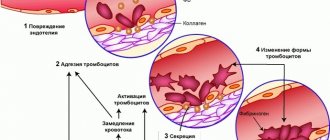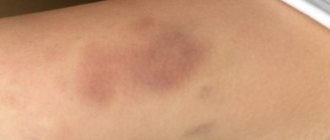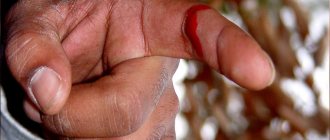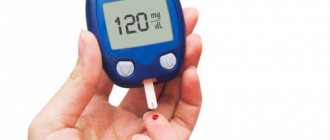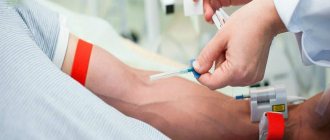It is not for nothing that there is an expression that blood is life. It circulates through blood vessels literally throughout our body and nourishes every organ and every cell with the necessary nutrients and oxygen, regulates the acid-base balance and internal water-salt balance, stabilizes the required temperature and protects the body with the help of antibodies.
Coagulation function
Coagulation is a mechanism for converting liquid blood into a clot with a dense consistency. This mechanism is activated at the slightest damage to the walls of a blood vessel, which provokes the release of a certain type of protein. The group of platelets closest to the affected area changes its normal shape to a spherical one, which has additional processes for adhesion to other cells. The purpose of this transformation and connection of cells is the formation of compacted adhesions. Such clots perform the function of blocking ruptures in the tissue, preventing the loss of valuable blood by the vessel and preventing harmful substances from the outside from entering the open bleeding wound.
This clotting process is called hemostasis.
Factors influencing the test result
In women during menstruation or pregnancy, a blood test for coagulation may show a slight deviation from the generally accepted norm. Oral contraceptives also cause a decrease in clotting time. In this case, the doctor takes into account the patient’s condition and interprets the result as normal.
The age category of the patient influences the VSC. In infants, due to the absence of certain substances in the body and the peculiarities of the functioning of internal organs, the VSC is at a low level, for them this is the norm. Coagulation testing in older adults usually shows increased clotting time due to high fibrinogen content.
Diet and lifestyle leave their mark on the condition of a person’s blood. Malnutrition and lack of vitamins and minerals can lead to decreased coagulation, creating a risk of massive bleeding and destruction of blood vessels. Extreme hobbies and physical trauma also negatively affect blood clotting time.
Existing clotting assays
It is worth noting that there is no separate test for platelets or clotting. These indicators are detected during the following diagnostic studies:
- Complete blood count (gives information about the number of platelets in the patient’s blood).
- Lee-White study.
- Blood test for clotting according to Sukharev.
- Coagulogram.
Duque blood clotting method
A similar procedure using the mentioned method, as well as the two previous ones, should be carried out in the morning on an empty stomach.
The patient's earlobe is pierced with a so-called Frank needle. Every 15-20 seconds, special paper is applied to the puncture site. When there are no more blood stains on it, the study is considered complete. The lower limit of normal clotting time is 60 seconds, the upper limit is 180 seconds.
In addition to these two methods, there are 30 more methods for determining coagulation. Depending on the method, the time ranges from two minutes to half an hour.
All of the above is clearly illustrated by the table:
Analysis according to Sukharev
The Sukharev blood clotting test is a simple method of analyzing blood taken from a capillary. This is done as follows:
- 1 ml of blood taken from a finger is placed in a special test tube (Panchenkov apparatus).
- Time is recorded.
- The temperature inside the apparatus must be maintained at exactly 37 degrees so that the biological material being analyzed is at the same temperature.
- At 30-second intervals, the capillary is tilted to the sides so that non-coagulated blood can spread along the walls.
- As soon as the blood stopped spreading, it completely clotted. The stopwatch stops and the clotting time is determined.
The blood clotting test according to Sukharev is performed immediately from the moment the biological material is submitted. Accordingly, if the laboratory is located remotely, the analysis results may not be particularly reliable. It is for this reason that this method is not performed in every hospital.
The time of the entire procedure (from blood sampling to recording the results) is no more than fifteen minutes.
Estimation of bleeding duration according to Duque
Bleeding time according to Duque
The bleeding time, the rate of which depends on the individual characteristics of the patient, can be estimated using a fairly simple method according to Duques. This is a special technique with which the condition of the circulatory system, namely the vessels, is assessed. From the start to the stop of bleeding, no more than 3 minutes should pass using this method.
Hemostasis is a biological complex with the help of which blood is stopped in a timely manner. The duration of bleeding using this method is an assessment of the state of platelets. In the absence of damage to the vascular walls, platelet activation should be carried out immediately.
When assessing the duration of bleeding according to Duque, platelet activity is assessed.
For this purpose, the number of platelets and a specific platelet formula are calculated. Also, in order to evaluate the indicators, factors such as the ability of platelets to aggregate with collagen, adenosine diphosphate and platelet aggregation, coagulability - von Willebrand factor activity are assessed.
More information about blood clotting can be found in the video.
The duration of bleeding using this method is most often determined using a special needle. Its design includes a hollow body and trigger, as well as a small tip and coupling for the spring. The needle is characterized by a high level of convenience, as it provides the ability to adjust the puncture needle.
In most cases, the piercing is done in places such as a finger or earlobe.
If the patient has normal hemostasis, then he can easily cope with bleeding. This will take him no more than two minutes. If blood clotting slows down, the duration of bleeding will be prolonged. This may indicate the presence of liver pathologies, hemophilia and various other diseases. The measurement of the fence directly depends on the area in which the puncture is made - in the earlobe or finger.
The Duque method for determining the duration of bleeding is not the only one. Very often, laboratory assistants use other parts of the human body to conduct research. In this case, difficulties in venous outflow are artificially provoked. To conduct the study, a puncture is made in the upper area of the forearm. Droplets of blood that form at the puncture site are removed with sterile wipes. After three minutes, only small spots should remain on the napkin. The duration of bleeding is a fairly important factor in human life. To determine it, it is necessary to undergo special studies.
- Privacy Policy
- Terms of use
- Copyright holders
- Adenoma
- Uncategorized
- Gynecology
- Thrush
- About blood
- Psoriasis
- Cellulite
- Ovaries
Indications for prescribing analysis according to Sukharev
An analysis is prescribed by the attending physician in the following cases:
- The test for blood clotting according to Sukharev in a child and an adult is necessarily checked in the preparation process before surgery. This estimates the future risk of probable life-threatening blood loss.
- During pregnancy, it is necessary to take clotting tests several times. If blood clotting is normal according to Sukharev in women during pregnancy, permission is given for childbirth (natural or cesarean section).
- In case of internal or external bleeding resulting from injuries.
- During a routine medical examination.
- With a predisposition to the formation of blood clots, thrombosis, varicose veins, thromboembolism.
- After a heart attack or stroke.
- In pre-infarction condition.
- For coronary heart disease.
- In the presence of regular arrhythmia.
- When pathologies are detected in the circulatory system.
- In cases of liver dysfunction.
- When taking anticoagulant drugs.
- For hemorrhagic pathological processes in the body.
- When diagnosing chronic anemia.
- With constant unpredictable nosebleeds.
- With heavy and long menstrual flow.
- If there is blood in the urine or stool.
- With sudden onset blindness.
- With a long course of taking anabolic steroids, glucocorticosteroids, oral contraceptives.
Morawitz method
Involves the use of capillary plasma. 2-3 hours before sampling, the patient should refuse to eat. Before the procedure, he needs to drink a glass of clean water.
A healthcare worker places a blood sample on a laboratory glass. It is checked every half minute using a glass tube. The time at which fibrin threads appear is considered the result of the test. According to the standards, the SC should take 3-5 minutes.
Coagulability can be assessed according to White, Duque or Panchenkov. All of these methods are capable of characterizing the level of coagulation, but the laboratories where the tests are carried out may have different standards. It is important to get tested in one laboratory in order to correctly compile or compare tables with results.
If the indicators are above the established norm
If the blood clotting time according to Sukharev is more than five minutes, then this is the result:
- Serious deficiency of plasma factors that are part of the prothrombin complex (ninth, eighth, seventh, first factors).
- Hereditary coagulopathy.
- Impaired fibrinogen conversion.
- Liver diseases.
- A course of treatment with heparin.
Interesting Facts
Such a rare and life-threatening genetic disease as hemophilia (a blood clotting disorder) causes serious harm only to the male half of the population. A woman can only be a carrier of this gene with pathology, but the disease itself does not affect her health in any way.
There are several names of diseases associated with disturbances in the number of platelets in the blood and their activity:
- Absolutely any deviations in these indicators are called thrombocytopathy.
- If the level of platelets in the blood is low, then this pathology is called thrombocytopenia.
- If the level of such a main component of blood as platelets is higher than normal, then this is the disease thrombocytosis.
- When impaired functional activity is detected, the disease is called thrombasthenia.
At Harvard University, a group of scientists and students discovered an interesting relationship between the amount of fibrinogen (a protein that is produced in the liver and converted into fibrin, the basis for clot formation during the activation of the blood clotting process) and the number of human contacts in society. Based on the research results, it was concluded that the narrower the circle of contacts with people, the higher the level of fibrinogen. And this, in turn, causes irreparable harm to health, especially detrimental to the cardiovascular system. Therefore, communicating with other people is beneficial not only for mental health, but also for physical health!
Some private laboratories provide the service of taking biological material for blood clotting testing directly at home, i.e., you do not need to go to the laboratory yourself. This is very convenient for disabled people, elderly people and small children.
Interpretation of test results
The norms in any analysis are the average values of many indicators of healthy people. To understand which norm will adequately assess the state of the body during a particular type of analysis, large-scale statistical studies are carried out.
At the same time, it is worth remembering that the average indicators are rather arbitrary, because people’s lifestyles may differ under the influence of non-pathological factors - individual norms sometimes go slightly beyond the boundaries of normal results.
This is one example of possible deviations from the norm. When analyzing the results of a hemostasiogram, a specialist must take into account specific factors in order to correctly assess the characteristics of the body’s functioning, identify possible pathology and prescribe treatment.
The ability to clot blood is determined using laboratory research methods, which use both capillary and venous blood.
A series of different tests may require a specific type of blood, which makes it possible to identify the characteristics of the course of hemostasis at different stages.
Diagnostic techniques for coagulation are studied:
- platelet content in the total blood volume - estimates the number of blood cells responsible for activating coagulation processes;
- fibrinogen content - determines the concentration of a special protein that plays an important role in strengthening blood clots;
- activated partial thromboplastin time (aPTT) - makes it possible to detect the activity of plasma factors independent of platelet activity;
- prothrombin index (PTI) - evaluates the ability of plasma blood factors to form clots under the influence of platelets. The analysis process reveals the ratio of prothrombin time indicators (in seconds) to normal prothrombin time;
- thrombosed time (TT);
- duration of bleeding according to Duke;
- clotting time – examines the ability of blood to form stable clots.
Capillary blood is used to determine platelet levels. The normal platelet count in adult women and men varies from 150 to 400 g/l, and in children - in the region of 150 - 350 g/l.
The amount of fibrinogen can be detected using venous blood. In adults, the norms vary around 2 - 4 g/l, and in newborns the values are slightly lower and range from 1.25 to 3.0 g/l.
To study APTT, material is taken from a vein, and the norms will be the same for everyone - from 35 to 50 seconds. The PTI of capillary blood (from a finger) should be in the region of 93–107%, and venous blood – 90–105%.
To study TV, blood is taken from a vein, and TV standards are kept in the range from 12 to 20 seconds. Duke capillary bleeding indicators should not exceed four minutes.




